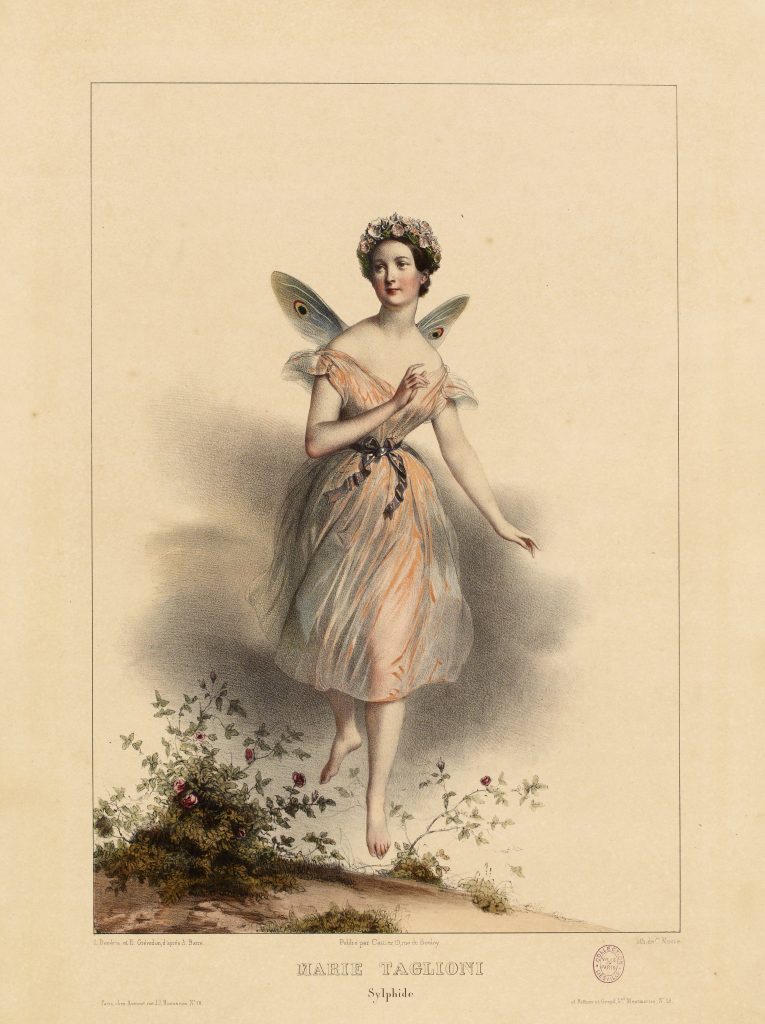

After her debuts in Vienna, Stuttgart and Munich, Marie Taglioni arrived in Paris in 1827, where she was quickly promoted to principal dancer at the Opera. With her light and airy style, she acquired a dazzling reputation thanks to the title role in La Sylphide, a ballet created for her by her father. She went on to become the living embodiment of the Romantic ballet, ensuring its success in all the capitals of Europe.
‘Mademoiselle Taglioni is a Christian dancer, if one may use such an expression about an art form banned by Catholicism: she flutters like a spirit in the midst of transparent vapours of the white muslin she loves to surround herself with. She looks like a happy soul who barely bends the tip of the heavenly flowers with her pink feet.’
Théophile Gautier, in La Presse, 11 September1837
Romantic: Romanticism is a cultural movement that spread across Europe in the late 18th and early 19th century, but with so many forms, in so many different areas, that it is impossible to precisely define it. It is often contrasted with classicism, which was based on respect for rules and tradition, on knowledge and rational reflection. Romanticism would come to be defined by the expression of sensitivity: emotion and imagination dominate, and artists seek above all to convey their feelings to spectators or readers. The heart prevails over reason. In France, the artists considered to be the best representatives of romanticism included François-René de Chateaubriand, Victor Hugo, Eugène Delacroix, Hector Berlioz and Antoine-Louis Barye.